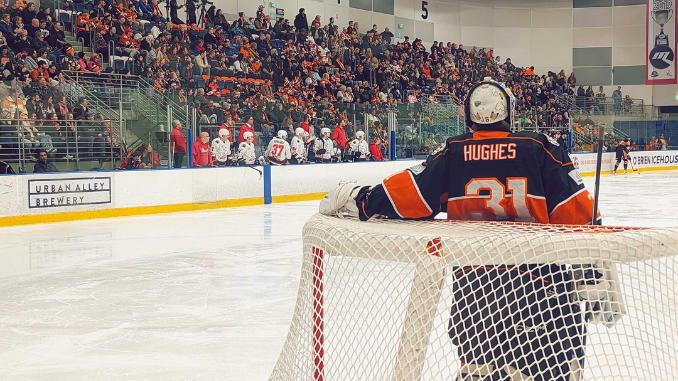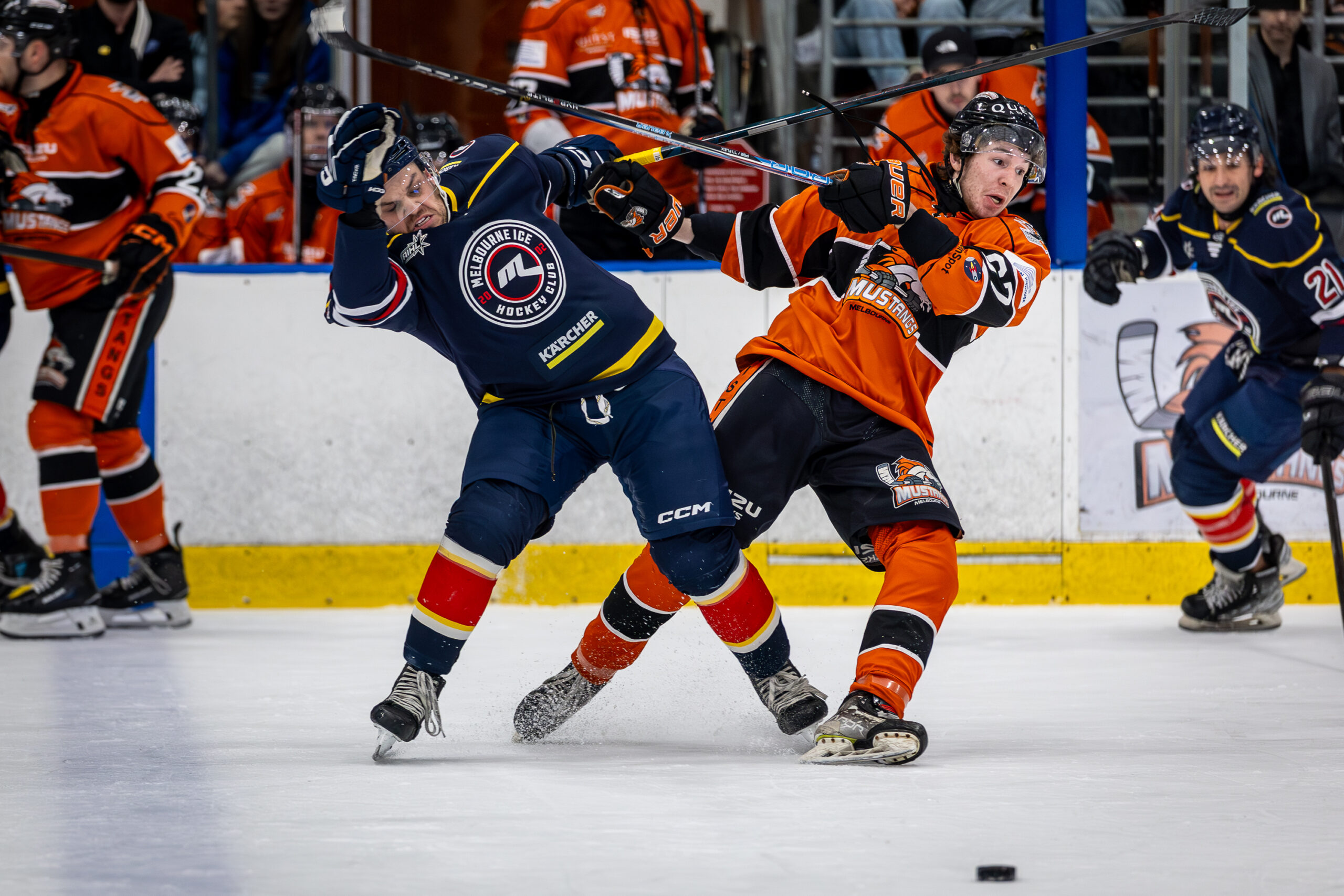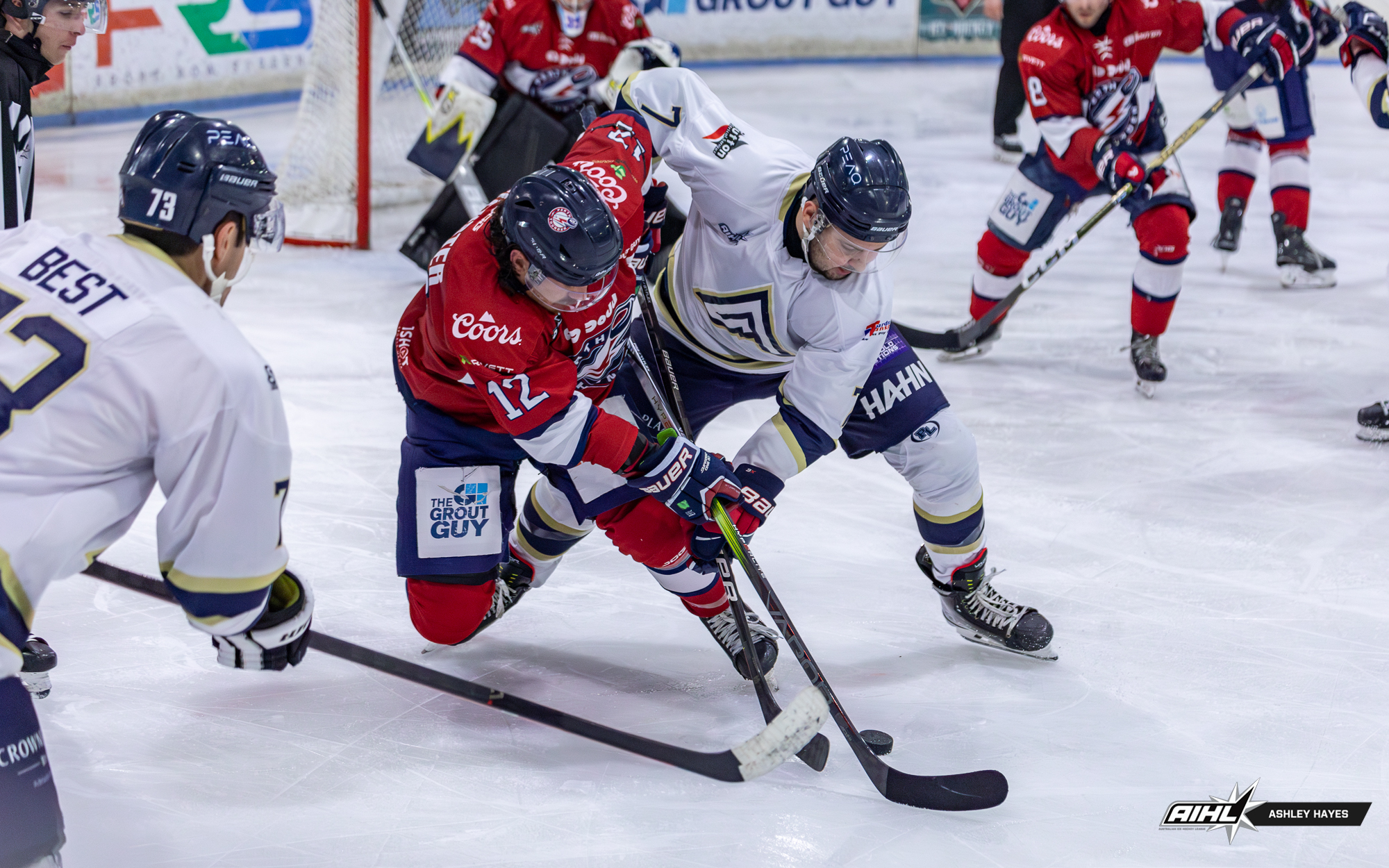Every year in the AIHL, there is some discussion about whether import goalies are worth taking one of the four import slots in a team on game day – and about whether having an import in net takes away from local development opportunities. Given how complex and comparatively unmeasurable the second point is, we’ll ignore it and take a look at the first – because that can be answered.
How common are import goalies?
Firstly, it is worth looking at how often import goalies are used. The simplest way to do this is to compare the number of minutes played by import goalies versus locals. As shown in Figure 1, import tenders make up 35% of the minutes played in the nine seasons since 2013 – so they are significant, but locals are still the clear majority.
Figure 1: Share of minutes played by goalies by status

Obviously this is going to vary a lot on a team-by-team basis, as teams have access to different local goalies in particular – which is a key part of the decision whether or not to use an import spot for a goaltender.
Figure 2 shows the breakdown for all 11 teams which have played in the AIHL in those nine seasons – and there are few surprises. The only teams yet to use an import are teams which only played one season in the sample – the Brisbane Lightning and the Canberra Knights (we can probably conclude that the Knights won’t be signing an import goalie soon).
Aside from those teams, the Newcastle Northstars have had 90% of goalie minutes played by locals, with only Harrison May in 2014 flying the flag for imports. On the other end of the spectrum, there are only two teams where imports make up a majority of the time between the pipes – the Rhinos in 2023 on their return, and the Perth Thunder who have had imports play 87% of their time in net.
Figure 2: Share of minutes played by goaltender status, by team

Performance – import v locals
Now we know a bit about how often imports are used – how well do they perform? The baseline idea is that an import goalie selected at random will outperform a local goalie selected at random – and the numbers in Figure 3 back this up, with imports showing a higher save percentage for every team in the sample.
Overall, imports average a 0.901 save percentage, with locals going at 0.873 – so there is a difference in the quality in net – no shocks so far, and if imports didn’t out-perform locals here, teams would stop bringing them in pretty quickly.
Figure 3: Save percentage by goalie status and team

Another measure to look at is Goals Against Average (a measure of how many goals are let in per game), and, similarly, imports outperform locals (4.051 vs 4.745).
But, the key difference in choosing where to put your four imports is whether the net effect of less goals allowed and more goals scored results from a different mix. This brings up the most important stat around this – goal difference.
Goal difference
Overall, winning games comes down to goal difference – if you score more goals than your opponent, you win. I’ll just pause while that astounding revelation sinks in.
For that, we compare average goals scored by teams with an import goalie, and goals allowed by teams with an import goalie. Basically, is the additional offensive firepower enough to account for the potential additional goals allowed? (And yes, I am simplifying an import skater to offensive threat – a stay-at-home D-man is an option for teams to take pressure off a local goalie).
A starting point here is to look at whether teams with local goalies score more than teams with an import – presumably due to having four import skaters.
Figure 4 shows that this is generally the case – with teams using local goalies scoring 0.163 more goals per game on average over the period.
There are three seasons before the COVID break, however, which buck this trend and have teams with import goalies scoring more than teams with local goalies. These are 2016, 2018 and 2019 – and all three of those seasons had a record-breaking regular season team on top of the standings, led by an import goalie (Melbourne Ice with Troy Davenport, CBR Brave with Matt Hewitt and Matt Climie, respectively).
Interestingly, in two of three of those seasons, that record-breaking team was knocked out of Finals in the Semi-Final by a team with a local goalie. Similarly, 2023 shows higher scoring by teams with import goalies – something that relies in no small part on the Mustangs and Thunder both scoring over 5 goals per game.
Figure 4: Goals scored by teams with goalie by status in net

Looking at the other side of the ledger, the goals allowed, gives us Figure 5, which shows that import-backed teams have conceded less goals in every season except 2014 (which had two teams led by locals finish first and second, and play off in the Goodall Cup Final). Overall, teams with import goalies concede 0.603 goals per game less than teams with local goalies.
Figure 5: Goals allowed by teams with goalie by status in net

Bringing these all together gives us Table 1 and Figure 6 (which further adjusts to remove empty-net goals) showing a breakdown by season, looking at the goal differential for teams with an import goalie, versus a local goalie. The impact given here is the goal differential for teams with an import, less the goal differential for teams with a local.
This is where the rubber really hits the road – and overall, import goalies result in teams having a goal differential of +0.409 per game. This result is consistent in every season since 2015, with 2013 and 2014 showing an advantage to local-backed teams (again, both seasons had top two teams with locals).
So, on average, having an import goalie is worth almost a goal per game versus a local. The key part here is “on average” though – and not all goalies are average goalies.
Table 1: Goal difference by season by goalie status
| Season | GDF Import | GDF Local | Impact |
| 2013 | -0.116 | -0.018 | -0.097 |
| 2014 | -0.168 | 0.091 | -0.258 |
| 2015 | -0.060 | -0.100 | 0.041 |
| 2016 | 1.398 | -0.469 | 1.867 |
| 2017 | 0.034 | -0.282 | 0.316 |
| 2018 | 0.183 | -0.344 | 0.527 |
| 2019 | 0.205 | -0.345 | 0.550 |
| 2022 | 0.000 | N/A | |
| 2023 | 0.494 | -0.157 | 0.652 |
| Overall | 0.182 | -0.227 | 0.409 |
Figure 6: Difference in goal difference per game – Import goalies versus local goalies

Note: a positive value here shows import goalies result in better goal differential over the season versus local goalies.
Does this make any sense?
If we look at Cup-winning goalies over the same period, there are a lot of locals – only two imports have lifted the Cup (Matt Hewitt in 2018 and Liam Hughes in 2023 – though Dayne Davis did grow up in Canada, he was naturalised by the time he played at Newcastle).
Looking at the 9 championship teams since 2013, along with the two imports, 5 of the 8 were won by Davis and Anthony Kimlin – who it is a fair to say are the stand-out local tenders of the last decade.
The other local goalie with similar save percentage is Kimlin’s 2013 Goodall Cup final opponent, Olivier Martin, who didn’t play again in the AIHL after that game. So is it more important just to find a good goalie, regardless of status? In short, yes.
Looking at all goalies to have led teams to playoffs (including the ‘play-in’ games of 2023), 23 of 38 goalies have been locals – and once a team makes it to the final weekend, anything can happen in single-elimination games. This leads into a look at splitting up goalies more finely than just ‘import’ versus ‘local’.
If we split the goalies into four groups by save percentage, depending on whether they record a save percentage above or below average for imports[1] or locals respectively we can see what happens when teams have a high- or low-performing import versus a high- or low-performing local.
Table 2: Goalies by status, goal difference.
| Goal difference | Import – high | Import – low | Import | Local – high | Local – low | Local | Difference |
| 2013 | 0.538 | -0.676 | -0.116 | 2.466 | -1.541 | -0.018 | -0.097 |
| 2014 | -0.522 | 0.301 | -0.168 | 0.759 | -1.599 | 0.091 | -0.258 |
| 2015 | 1.033 | -1.245 | -0.060 | 1.248 | -3.011 | -0.100 | 0.041 |
| 2016 | 1.398 | 1.398 | -0.117 | -1.237 | -0.469 | 1.867 | |
| 2017 | 0.034 | 0.034 | 0.159 | -1.584 | -0.282 | 0.316 | |
| 2018 | 1.169 | -2.734 | 0.183 | -0.031 | -1.496 | -0.344 | 0.527 |
| 2019 | 3.883 | -0.598 | 0.205 | 0.845 | -2.258 | -0.345 | 0.550 |
| 2022 | 1.062 | -1.750 | 0.000 | N/A | |||
| 2023 | 2.331 | -4.703 | 0.494 | 1.428 | -2.166 | -0.158 | 0.652 |
| Overall | 0.981 | -1.107 | 0.182 | 0.868 | -2.112 | -0.227 | 0.409 |
As Table 2 shows, the difference between an above-average import goalie and above-average local goalie is not much when it comes to goal difference (+0.981 vs +0.868) – but having below-average goaltenders of either variety really hurts teams. None of this is particularly surprising – good goalies result in better records!
What is important here is what local goalie is available to a team. To borrow a term from Sabremetrics (or Moneyball), what matters is the Goaltending Above Replacement (or GAR) – basically, how good is your local tendy, and how good an import can you get.
For example, if the Bears have Kimlin in net, the incentive to get an import goalie is very low. However, if you are a team with a younger, developing goalie (perhaps like the Mustangs in 2023 with Seb Woodlands, or the Brave in 2018 with Alex Tetreault as a 20 year old) then a high-quality import can give you some cover.
Ideally they will also work with the young goalie to develop them – which anyone around the Brave organisation in 2018 will attest was a strength Hewitt brought to the team.
One other factor that isn’t included anywhere here is the quality of the team in front of the goalie. Obviously this is a huge factor in any success – just ask 2023 AIHL Goalie of the Year, Andrew Masters, who was fantastic, and still ended up with 0.860 and 7.622.
What does this all mean?
In short – nothing ground-breaking. The key takeaway from here is that while import goalies are worth it on average, that average depends a lot on what your local goalie stocks are like.
Can your local tendy put up a save percentage around 0.880 or higher? Can the import you are talking to put up a save percentage over 0.900? These are the key questions for teams as they work to put together their roster for the 2024 season.
.
[1] For 2013 to 2019 (50 minute games) the save percentage averages were 0.898 for imports, 0.875 for locals. For 2022 and 2023 (60 minutes) it was 0.874 and 0.861, respectively.




3 responses to “Are import goalies worth it?”
I think possibly one more interesting stat to look at would be goalie “demographics”, so to speak? Especially looking at figure 3 – I’d be interested to know how many import tenders each team has had vs locals, and whether there’s a connection between having a higher average team import save % and having more import tenders historically, or even the opposite way around.
We do have that breakdown – import goalies by team (and total goalies who have seen time in net over 2013 to 2023 – some have only seen a few minutes):
– Adelaide Adrenaline – 4/13
– Brisbane Lightning – 0/2
– Canberra Knights – 0/4
– CBR Brave – 3/10
– Central Coast Rhinos – 1/4
– Melbourne Ice – 6/15
– Melbourne Mustangs – 4/15
– Newcastle Northstars – 1/9
– Perth Thunder – 8/15
– Sydney Bears – 6/16
– Sydney Ice Dogs – 5/16
[…] If you want to dig deeper into whether import goalies are worth a slot – we already covered that in the offseason here. […]